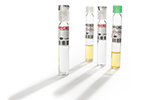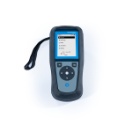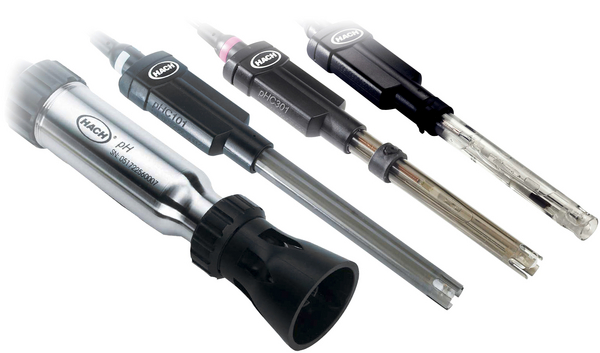-
Products
- Lab Instruments
-
Lab Meters and Probes
Calibration Standards Sension+ Meters and Probes
- Chemistries, Reagents, and Standards
-
Online Analysers
Ammonium Analysers Chlorine DioxideChlorine Analyzers
- CL17sc
- CL10sc Amperometric
- 9184 sc Amperometric
- Ultra Low Range CL17sc Colorimetric Chlorine Analyser
EZ Series Analysers- Iron
- Aluminium
- Manganese
- Phosphate
- Chloride
- Cyanide
- Fluoride
- Sulphate
- Sulphide
- Arsenic
- Chromium
- Copper
- Nickel
- Zinc
- Ammonium
- Total Nitrogen
- Total Phosphorus
- Phenol
- Volatile Fatty Acids
- Alkalinity
- ATP
- Hardness
- Toxicity
- Sample Preconditioning
- Boron
- Colour
- Nitrate
- Nitrite
- Silica
- Hydrogen Peroxide
- EZ Series Reagents
- EZ Series Accessories
- EZ sc Series Inorganics
- EZ sc Series Metals
- EZ sc Series Nutrients
-
Online Sensors and Controllers
Digital Controllers (Transmitters) Controllers (Analogue)
- SC4500
- Orbisphere 366x Ex
- Orbisphere 410/510 Carbon Dioxide
- Orbisphere 410/510 Oxygen
- Orbisphere 410/510 Ozone
- Orbisphere 51x Hydrogen
pH & ORP Sensors- 1200-S ORP
- 1200-S pH
- 12mm pH/ORP
- 8362 sc High Purity
- Combination pH/ORP
- Differential pH
- Digital Differential ORP
- Digital Differential pH
- LCP pH
Conductivity Sensors- 3400 Analogue Contacting
- 3400 Digital Contacting
- 3700 Analogue Inductive
- 3700 Digital Inductive
- 3798 sc Electrodeless
- 9523 Cation Conductivity
- 9525 DCCP System
-
Automated Lab Systems
Automatic Laboratory Analyser
- Samplers
- Test Kits & Strips
-
Microbiology
Prepared MediaKits Labware
- Accessories
- Funnels, Pumps & Manifolds
- Microbiology Filters
- Petri Dishes & Accessories
- Sampling Bags
- Vials, Tubes, Bottles & Racks
-
Lab Equipment and Supply
General Lab Consumables Books and Reference MaterialGlassware/Plasticware InstrumentsSafety Equipment Apparatus
- Claros Water Intelligence System
- Electrochemistry
- Parameters
- Industries
- Brands
- Service
- Support
- News & Events
MENA
Choose your country or region:
Europe
Americas
Asia - Australasia
- Australia
- Mainland China
- India
- Indonesia
- Japan
- Malaysia
- New Zealand
- Philippines
- Singapore
- South Korea
- Thailand (Thai)
- Taiwan
- Vietnam
Middle East - Africa
Dissolved Oxygen Meters
At Hach ®, you'll find the instruments, kits, reagents, training, and software you need to manage and measure dissolved oxygen levels in your specific laboratory or process application.
Featured Products for Monitoring Dissolved Oxygen
LDO 2 sc Luminescent Dissolved Oxygen Sensors
Hach’s next generation LDO ® (luminescent dissolved oxygen) Probe requires no calibration for the entire 2-year life of the sensor cap, which means it is ready to start measuring your DO from 0 to 20 ppm right out of the box.
Learn MoreHQ Series Portable Meters
The HQ Series is for water quality professionals who want to perform electrochemical analysis for field and lab environments.
Learn MoreHQ Series/HQD Meters/Intellical Probes
The rugged and durable HQD ® Portable and Laboratory Meters are designed to give drinking water and wastewater professionals the greatest confidence and flexibility.
Learn MoreIntellical Probes
Red Rod probes offer exceptional performance and response time across a wide variety of sample types in the laboratory. Rugged stainless steel outdoor probes are extremely practical for on-site analysis in 0.05 – 20 ppm range.
Learn MoreOrbisphere K1100/K1200 Oxygen Sensors
Orbisphere ® K1000 Sensors are maintenance-free, optical LDO Sensors designed for monitoring oxygen in power plants and other low (0 – 2 ppm) and high (0 – 40 ppm) range applications. The K1x00 series also includes a sensor designed for nuclear power applications.
Learn MoreOrbisphere M1100 Oxygen Sensors
The Orbisphere ® M1100 Optical Sensor, together with the Orbisphere ® 410 (one channel) and the Orbisphere ® 510 (multi-channel) Controller, offers a new way of monitoring oxygen in the beverage production process and other low (0 – 2 ppm) and high (0 – 40 ppm) range applications.
Learn MorePolymetron 9582 Dissolved Oxygen Sensors
9582 sc Dissolved Oxygen Electrochemical Sensors are designed for ppb-level measurements in ultrapure water, boiler water and condensate. They are an integral part of a complete water analytics system designed for the power industry.
Learn MoreOrbisphere GA2x00 Oxygen Sensors
The Orbisphere ® GA2400/GA2800 EX oxygen (O 2) Electrochemical (EC) Sensors are designed for process monitoring, as well as laboratory analysis in the liquid or gas phases.
Learn More
Measure dissolved oxygen crucial to water treatment applications
Measuring dissolved oxygen in water and treatment to maintain proper DO levels, are crucial functions in a variety of water treatment applications. While dissolved oxygen is necessary to support life and treatment processes, it can also be detrimental, causing oxidation that damages equipment and compromises product. Dissolved oxygen affects:
-
Quality: The DO concentration determines the quality of source water. Without enough DO, water turns foul and unhealthy affecting the quality of the environment, drinking water and other products.
-
Regulatory Compliance: To comply with regulations, wastewater often needs to have certain concentrations of DO before it can be discharged into a stream, lake, river or waterway. Healthy waters that can support life must contain dissolved oxygen.
-
Process Control: DO levels are critical to control biological treatment of wastewater, as well as the biofiltration phase of drinking water production. In some industrial applications (e.g. power production) any DO is detrimental for steam generation and must be removed and its concentrations must be tightly controlled.
Which Processes Require the Monitoring of Dissolved Oxygen?
How is Dissolved Oxygen Monitored?
Because DO is a dissolved gas, it must be measured on site, ideally in the body of water. Drawing a grab sample introduces atmospheric oxygen and temperature changes interfering with the accuracy of the measurement.
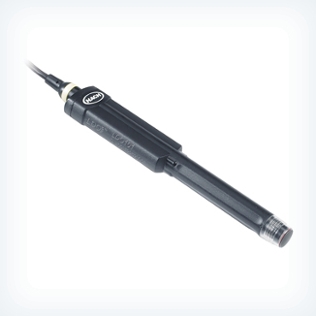
Electrodes
Because DO is a dissolved gas, it must be measured on site, ideally in the body of water. Drawing a grab sample introduces atmospheric oxygen and temperature changes interfering with the accuracy of the measurement.
Shop NowOptical Sensors
This method uses light and luminescent material to measure DO. These electrodes require less maintenance, hold calibration, are not affected by hydrogen sulfide or other dissolved gases. They offer accuracy, stability and reproducibility at fast response times.
Shop NowElectrochemical Sensors
This method utilizes Galvanic or Clark-type electrodes (anode and cathode in an electrolyte solution) to measure DO. To ensure accuracy the electrodes require frequent calibration and water samples must be gently stirred.
Shop Now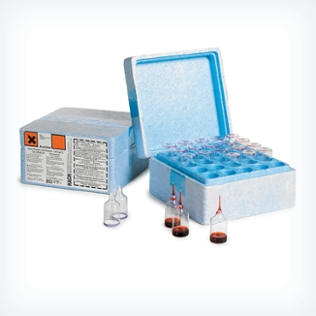
Colorimetric Method
Indigo carmine reacts with the DO in the water producing a blue color proportional to the DO concentration. The blue color can be visually compared to a chart or read with a colorimeter or spectrophotometer. This method is portable and suitable for field-use, but it has limitations. The water must be transparent and free of particulates.
Shop Now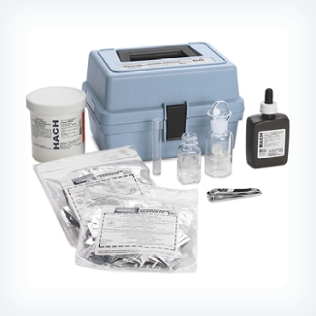
Winkler Titration
This method is performed by adding chemicals (manganese, iodide and hydroxide) to water samples to create a reaction with the DO that forms an acidic solution. The amount of alkali reagent required to neutralize the acid with titration, indicates how much DO was in the original water sample. Though it is considered a traditional method in some areas, it is time consuming and subject to human error. No online instrumentation exists for this method.
Shop NowFrequently Asked Questions
How can monitoring DO save my treatment plant money?
Up to 70% of a wastewater plant’s energy budget is spent powering their aeration system. For years, these aeration systems were controlled by manually changing the airflow set point, valve positions or speed of the motor because membrane DO sensors were unreliable. LDO allows the systems to automatically control the aeration to a certain DO set point, allowing the blowers to respond to the loading in real time and saving 30 to 60% in energy costs.
Why is DO important?
Dissolved oxygen is necessary to many forms of life including fish, invertebrates, bacteria and plants. These organisms use oxygen in respiration, like organisms on land. Fish and crustaceans obtain oxygen for respiration through their gills, while plant life and phytoplankton require dissolved oxygen for respiration when there is no light for photosynthesis. The amount of DO needed varies from creature to creature. Bottom feeders, crabs, oysters and worms need minimal amounts of oxygen (1-6 mg/L), while shallow water fish need higher levels (4-15 mg/L). Bacteria and fungi also require dissolved oxygen. These organisms use DO to decompose organic material at the bottom of a body of water. Microbial decomposition is an important contributor to the nutrients cycle. However, if there is an excess of decaying organic material (from dying algae and other organisms) in a body of water with infrequent or no turnover (also known as stratification), the oxygen at lower water levels will be used up quicker.
What is DO saturation?
In a stable body of water with no stratification, DO will remain at 100% air saturation. The 100% air saturation means that the water is holding as many dissolved gas molecules at it can in equilibrium. At equilibrium, the percentage of each gas in the water would be equivalent to the percentage of that gas in the atmosphere, which is known as its partial pressure. The water will slowly absorb oxygen and other gases from the atmosphere until it reaches equilibrium at complete saturation. This process is sped up by aeration. It is possible for DO to exceed 100% air saturation in water by biological means.
How does pressure affect oxygen solubility?
Dissolved oxygen concentration will increase as pressure increases. This is true of both atmospheric and hydrostatic pressures. Water at lower altitudes can hold more DO than water at higher altitudes. This relationship also explains the potential for "supersaturation" of waters below the thermocline. At greater hydrostatic pressures, water can hold more DO without it escaping and therefore, dictate lower DO saturation at the same concentration. Gas saturation decreases by ~10% per meter increase in depth due to hydrostatic pressure, given the water temperature is constant. This means that DO at the same concentration can be at 100% air saturation at the surface and it would only be at 70% air saturation 3 meters below the surface.
What affects DO solubility?
Two bodies of water that are both 100% air-saturated do not necessarily have the same concentration of DO. The amount of dissolved oxygen (in mg/L) will vary depending on temperature, pressure and salinity.
What is Dissolved Oxygen (DO)?
Dissolved oxygen is a measure of the amount of gaseous oxygen contained in water. Healthy waters that can support life must contain dissolved oxygen (DO).
Dissolved Oxygen enters water by:
- direct absorption from the atmosphere.
- rapid movement from winds, waves, currents or mechanical aeration.
- aquatic plant life photosynthesis as a by-product of the process.
INDUSTRIES
RESOURCES
CUSTOMER SUPPORT
Looking for our Hach US Site?
It appears that you are visiting Hach from the United States but the site you are currently visiting is for Middle East & North Africa.
Would you like to visit the Hach US site instead?




